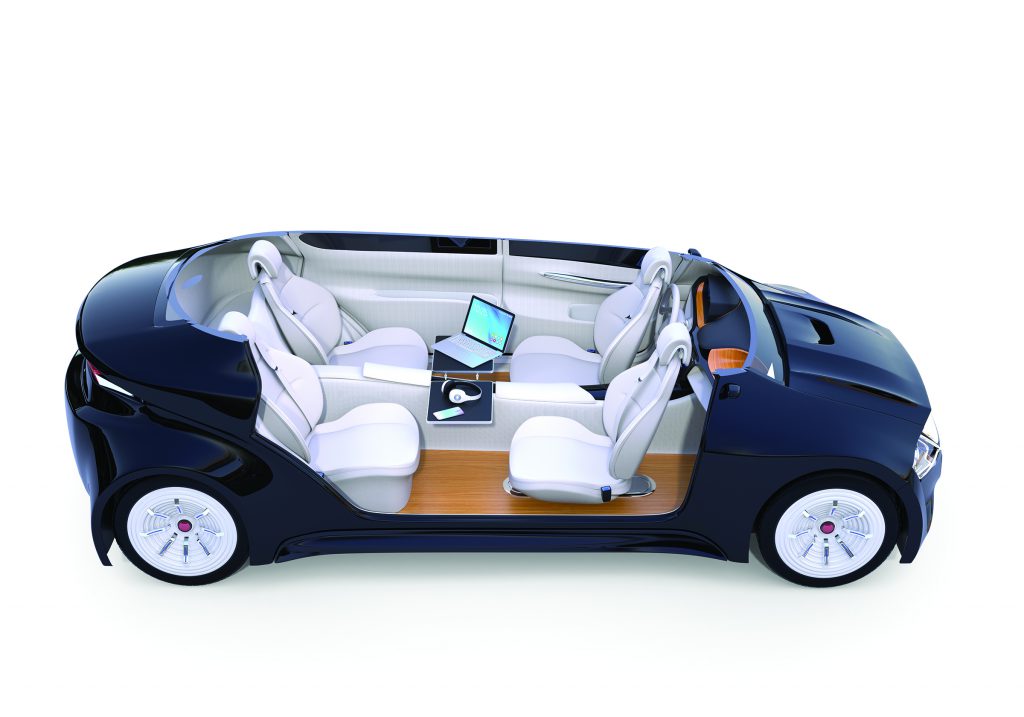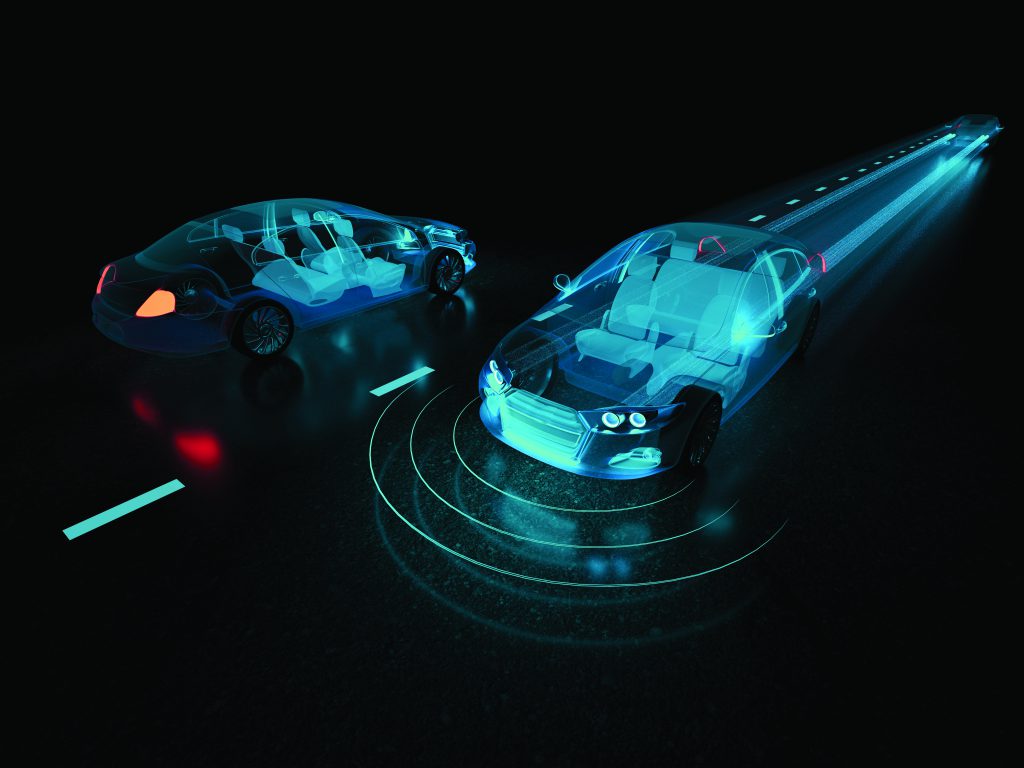If you are planning to buy a car sometime soon, you might have asked yourself if it will the last car you will drive. Judging by the general feeling, we are in the last moments before the revolution that marks the end of cars that require our concentration and attention, and the rise of autonomous vehicles as the primary vehicle. Reality, per usual, is a little more complicated. The self-driving car is indeed on its way, but the road ahead is still long.
“The technology is not yet ripe,” says Eran Sandhaus, partner at the consulting firm Copia Growth Partners and former vice president and director of the autonomous-driving division at Delphi, a major parts supplier to the automotive industry. “There are already many autonomous vehicles operating in the world – in mines, in military operations, and in factories, but they operate on preplanned routes. That’s not what we think of when we imagine autonomic transportation.” According to Sandhaus, the autonomic project currently hinges on three axes: safety, cost, and the scalability of implementation.
The External Data
Progress on each axis requires dealing with a long list of obstacles and problems in a sophisticated system of sensing, data processing, and decision-making that will affect the autonomous vehicle’s driving.

For example, let’s take the matter of sensing – receiving external data. This can be done through use of a camera, as Mobileye is promoting, or through radar. But it is becoming clear that in order to function properly, autonomous cars (unlike safety systems such as Mobileye), must be equipped with five or six cameras and sometimes even more, in addition to radar as well as a third component – Lidar, that is laser radar.
Lidar is a system that detects distances from different objects using laser beams rather than radio waves (like radar does), which enables high precision fast, which is necessary in the dense urban environment. But until now, Lidar has been a military technology – big, expensive, and wasteful, energy-wise. The Lidars on the rooftops of Google’s autonomic cars, for example, aren’t just cumbersome, their cost (about $75,000) is even higher than the car itself.
Indeed other companies, including the Israeli Innoviz, are developing smaller and cheaper Lidars, but it will take time until the technology is ready. The need for a large number of sensors whose reception overlaps with one another (that is, every point around the car is covered by several multiple sensors of different types), not only increases the cost of the car, but also requires a great deal of energy.
Facing the Energy Challenge
Enter an additional challenge – the energy challenge. The automotive industry is in a process of transition from pollutive gasoline and diesel engines to electric propulsion, but it is not clear if the batteries that do the work for ordinary vehicles can meet the increased energy needs of the large array of sensors for hundreds of kilometers of travel. In other words, if there are no breakthroughs in the field of batteries (see separate article), the sensors and the rest of the autonomous car parts will have to be energy efficient.

Another challenge is navigation. This is done through GPS technology, but this is not the same GPS as you have in your phone, which takes the navigation system a relatively long time to understand that you took a different turn and to recalculate the route. This is a kind of extremely precise locating, with a margin for error of just 10 centimeters. A bigger mistake could make the car stray into the lane beside it.
Perfect Balance
The enormous flow of information, including photographs from different cameras, radar readings and location data, arrives to the computer that is supposed to process it and make quick decisions. Is it possible to speed up or should it slow down? Can it move into the next lane? Is there an emergency situation that requires sudden breaking? The system that is required to do so (smoothly and without mistakes) will also require AI capabilities, that will enable it to observe the movement of vehicles and interpret information such as pedestrians’ facial expressions. Sandhaus notes, that “what we need is an understanding of both the global picture and the forecast – what can be expected in the social environment in which the car will drive. For example – what might some driver who is just now looking at their phone do?”
Here enters the third axis of progress – the effort to apply the tech on a large scale. Cultural and behavioral codes differ between countries and even, in point of fact, from one city to the next. The autonomic vehicle will have to behave differently in a neighborhood of Jerusalem than it will in downtown New York City.
The car must also be pleasant for passengers. You probably would not be happy to ride with a driving student that brakes aggressively at every hint of potential danger. Nor can the vehicle be overly cautious. On the other hand, it cannot take risks on the road, so a precise balance must be found between careful driving and moving smoothly with the flow of traffic, a complex matter for a car without a driver.

Information processing, predicting, and decision-making regarding movement must occur constantly and extremely fast. The processing power that the cars require is nothing like that of a smartphone or laptop. It requires a powerful computer that must be resistant to heat, cold, and jolts that no desktop would ever encounter. A computer such as this will also require a special cooling system, ideally also energy-efficient, so as not to overtax the electric car battery.
Star Wars
The list of challenges facing the autonomic vehicle project developers makes it clear that the final product is not yet around the corner. Most estimates now suggest that the middle of the next decade is when the first cars will be presented with fourth-degree autonomy, such that does not require the presence of a driver. Professor Amnon Shashua, founder of Mobileye, recently predicted that the first autonomous cars would be robotic taxis for shared transport or privately owned luxury limousines. In both cases, the owners will need to have deep pockets (company or someone with capital), who are willing to pay the high price for autonomous driving.
But the autonomous cars will come, even if it’s later than expected. Sandhaus defines the field as “green”, that is – a big, untapped market. Which is why companies from different fields, and of different sizes (from tech giants to small startups), are all competing in the race to get there. The car manufacturers are trying to stay in the market and acquire capabilities in the computing and information processing field, big components suppliers are developing entire systems, processor manufacturers, like Intel, and data services providers such as Google as well as transportation service providers like Uber “must have a solution that they can control”. This creates a war between all the players such as General Motors, Mercedes, Continental, Baidu and Alibaba, which is a very incomplete list. All of them are investing in startups and all of them are looking for solutions to the different challenges in the race to replace the driver.
Only one challenge has not yet been mentioned – regulation. Not because this is an insignificant challenge, but mainly because it is too early to begin to seriously try to grapple with. The different companies that are active in the field are trying to obtain permits for extensive experiments, in changing environments, and permits to operate autonomous cars are likely to be on the agenda only when the technology enters widespread use. “Regulation follows technology,” says Dr. Shai Soffer, chief scientist at Israel’s Ministry of Transport. “As the technology matures, it will become increasingly open. Today we are dealing with making experimentation possible. I don’t want companies to give up on experiments in Israel because of unnecessary regulations, but rather that Israel be a central hub for the development of autonomous and shared vehicles.”

When the autonomous cars do hit the streets, it will be the biggest change in day-to-day transportation since the car replaced the carriage. The scenarios and predictions for such a future are diverse, but most of the researchers and players in the field believe that the era of car ownership is over.
There is no reason to maintain an expensive product that is not in use 23 hours out of the day – it is better to pay for travel as needed. Such travel will be much cheaper and safer than a taxi, so we will use it more. This will also have consequences, like a possible increase in traffic and traffic jams – phenomena that will require some consideration and possibly redesigning the road system. One of the solutions for which, unlike classic cars, it may be too soon to eulogize, is the trains. But that is another vision.
Some Leading Companies in the Race for Autonomy:
M.W. – the German manufacturer, along with all the major car-makers, is conducting experiments in autonomic driving. It is doing some experiments alone and others in collaboration (Honda, for example, recently signed on to collaborate with General Motors). Until now, car manufacturers primarily dealt in mechanics (engines, gears, brakes) and, of course, marketing and sales. Now they are trying to penetrate the world of sense, machine learning, big data and artificial intelligence – all of which will be required of the vehicle supplier of the future. BMW is starting to gradually habituate its clientele to the new cars with the help of display vehicles that model the future of transportation.
Intel & Mobileye – the huge chip manufacturer missed the cellular revolution and cannot permit itself to miss the autonomous car too. Which is why they acquired Mobileye for about 33% above the value at which it was being traded. Mobileye provides sensors and machine vision capability, and Intel hopes to capture a share of the market for powerful processors that will be required for autonomous vehicles. Mobileye is also conducting experiments for autonomous cars in Israel.
Waymo (Google) – Google’s autonomous driving project began nearly a decade ago and since then has split into a fellow subsidiary company of the Alphabet corporation. Google’s entry illustrates the disruption that could happen in the field of transportation, where the leading companies won’t be the automakers, but rather those who control information. If Google takes you to work, think how much data they can collect on you and how much they will direct you to their other services. Fiat-Chrysler now supplies Waymo with the vehicles on which they are conducting their experiments.
Aptiv – Delphi was a major car components manufacturer that went bankrupt in 2007, and after several reincarnations, was reestablished as Aptiv – a company that specializes in autonomous management, safety systems, sensing and processing of information (thanks to the acquisition of several startups). This demonstrates how the big (Tier 1) parts manufacturers are trying to prepare for the future of transport, in which there will be no demand to supply gearboxes or fuel syringes, and their competition will include such companies as Intel or Google, and maybe even the car manufacturers themselves. Bosch, Continental, and Denso are doing likewise.
Tesla – the young automaker is making its way in great leaps forward. It only offers electric cars, without internal combustion engines, and in the field of autonomous cars too, it takes higher risks and already enables near-autonomous driving along a pre-mapped route. It is unclear if the cars are sufficiently safe; the driver might also have to decide how much risk he is willing to take.
Uber – the big ride-sharing company is investing huge amounts in autonomous driving simply in order to be part of the ecosystem of the future. If it does not join in the race towards a driverless world, its application’s services which connect between drivers and passengers will be superfluous. Uber hopes that removing the driver from the car will reduce travel costs and encourage passengers to use their services even more in the distant future.
Didi – the Chinese manufacturer was relatively late to enter the race for autonomy, but Didi demonstrates how they can bypass Western competitors. Didi is a huge Chinese ride-sharing company, which won a large tender for shared transport in China. The tender actually pushed Uber out of the country and forced it to sell its local network to Didi. The Chinese company is also cooperating with Toyota and won investments from Apple and Softbank. With the funds they are expanding globally and developing their own autonomous technology. The trade company Alibaba as well as the internet companies Baidu and Tencent are also players in the self-driving playing field, with government backing (and blocking Western competition from the local market) promising to be extremely helpful.
Translation by Zoe Jordan




